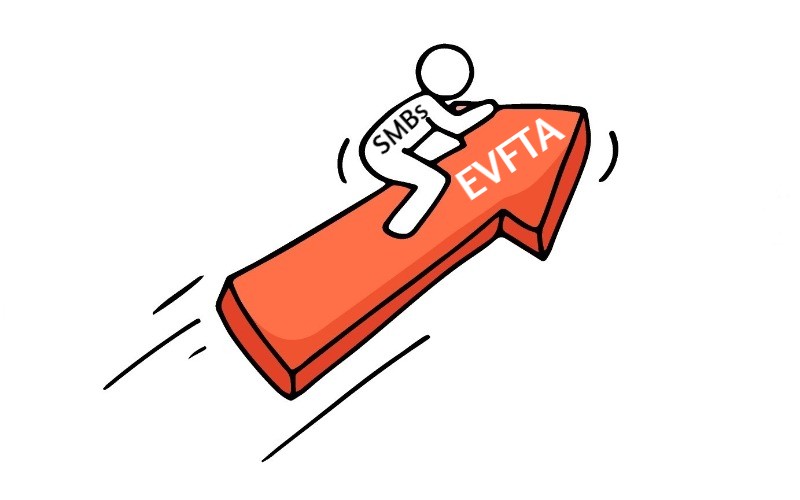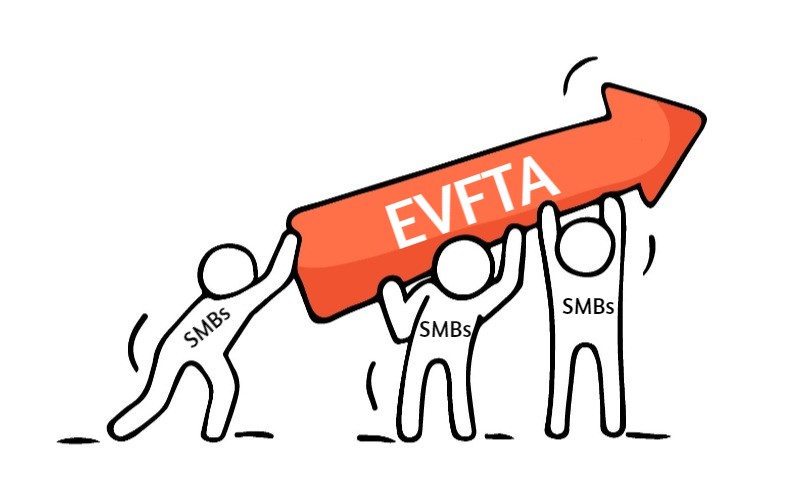Since the Vietnam – EU Free Trade Agreement (EVFTA) took effect on August 1st, it consistently creates many opportunities for small and medium businesses (SMBs) – the majority of Vietnamese enterprises – by removing and reduce import taxes and other trading barriers. On the other hand, EVFTA also listed out specific requirements and standards on imported goods and products from Vietnam. This will be one of the biggest turning points for most Vietnamese SMBs, as they have to restructure their business, production model for exported goods, attract new investors, increase their business competence. Will they be able to conquer this mountain full of opportunities and competitors, or will they fall behind and disappear in the sea of domestic SMBs?
EU is Vietnam’s major import-export market
The EU market includes 27 countries, with a population of 450 million people and an annual GDP of about 16,000 billion USD, showing the vastness and attraction for Vietnam to accelerate exports through this market. Currently, the countries within the European Union (EU) are Vietnam’s major import and export markets.
Data from the General Department of Customs shows that in 2019, Vietnam exported 41.7 billion USD to the EU market, on par with the export turnover to China. The presence of EU markets is found in most of Vietnam’s largest export categories. For instance, smartphones and accessories turnover reached 12.36 billion USD. Computers, electronic products and components category reached 5.06 billion USD. The second-largest group of agriculture, forestry and fishery products of Vietnam accounts for 15-17% of export turnover, right after China (20-22%). In addition, textiles, footwear, agricultural, machinery, equipment, tools and spare parts… are all maintaining a turnover of billions of USD.
The opportunities of EVFTA

For exporting
As soon as the Agreement came into effect, the EU erased the import duties on 85.6% product categories. This is equivalent to 70.3% of Vietnam’s export turnover to the EU. These numbers will go up to 99.25 and 99.7% respectively after 7 years. The remaining 0.3% of export turnover is guaranteed to be given a tariff-rate quota with the import tax in the quota of 0%.
Thus, it can be said that Vietnam’s export turnover to the EU will be almost 100% free from import taxes and duties after just a short period. This is the highest level of commitment that Vietnam has reached among signed FTA so far. This benefit is especially powerful as the EU has been continuously one of the two largest export markets of Vietnam in recent years.
On the import perspective
Vietnamese businesses will also benefit from imported great, stable quality goods and raw materials with better prices from the EU. Not only that, these enterprises will have the access to sources of cutting-edge machinery, equipment and technology from EU countries, thereby improving the productivity and quality of their goods. At the same time, products and services imported from the EU into Vietnam will create a positive competitive pressure for Vietnamese enterprises to make efforts in improving their competence.
FDI attraction boost
With an even more hospitable economic environment and the 2 recent victories against the. Covid-19 pandemic, Vietnam is now one of the brightest destinations in South East Asia for the sharks .and whales not only in Europe but also around the world to swim in.
Improved business environment
To comply with all the commitments made in the Agreement, Vietnam will have to improve. its political and economic policies. This direction will lead to a better, more transparent .business environment, and head towards a more suitable system for international practices.
Naturally, those advantages are one side of the coin. Now we explore the other side: What .challenges will SMBs in Vietnam have to overcome in order to grasp the opportunities from EVFTA?
The challenges of EVFTA

Product’s origin regulation requirements can be difficult to meet:
Normally, when goods want to enjoy FTA tariff preferences, the materials have to meet a. certain level of internal content (materials originating in the EU and / or Vietnam). This is a big challenge for Vietnamese enterprises because most of the raw .materials for exported products are currently imported from China or ASEAN.
The TBT SPS barriers and customer high standard demands
The EU is one difficult and strict market. Their customers set very high standards for product quality. Compulsory requirements for food safety, product labeling, effects on the. environment … of the EU are very strict and not easy to meet. Therefore, to make the most out of those tariff benefits, Vietnamese SMBs will have to make a lot of improvements in their businesses and production chains. Otherwise, they will be kicked out of the game pretty much at the start.
The competition pressure from EU products and services
Opening the Vietnamese market to the EU means that Vietnamese SMBs will have to .compete for really high-quality products and services right in their backyard. In fact, this is a huge challenge, because EU businesses have advantages over Vietnamese .ones in terms of competitiveness, market experience as well as the ability to take advantage of FTAs.
To sum up
The effect of EVFTA is a prize to be earned, not a favor for anyone. To think in resemblance, this Agreement is a great, dangerous mountain which grants powers to those. who can conquer it. Nevertheless, Vietnam’s open economy policy is not without strategies, especially when it comes to sensitive product categories. EVFTA has brought a great pressure on the SMBs in Vietnam, but it is a necessary pressure to bring them. together and make them adjust and adapt,. collect business experience and improve their competence over time.




